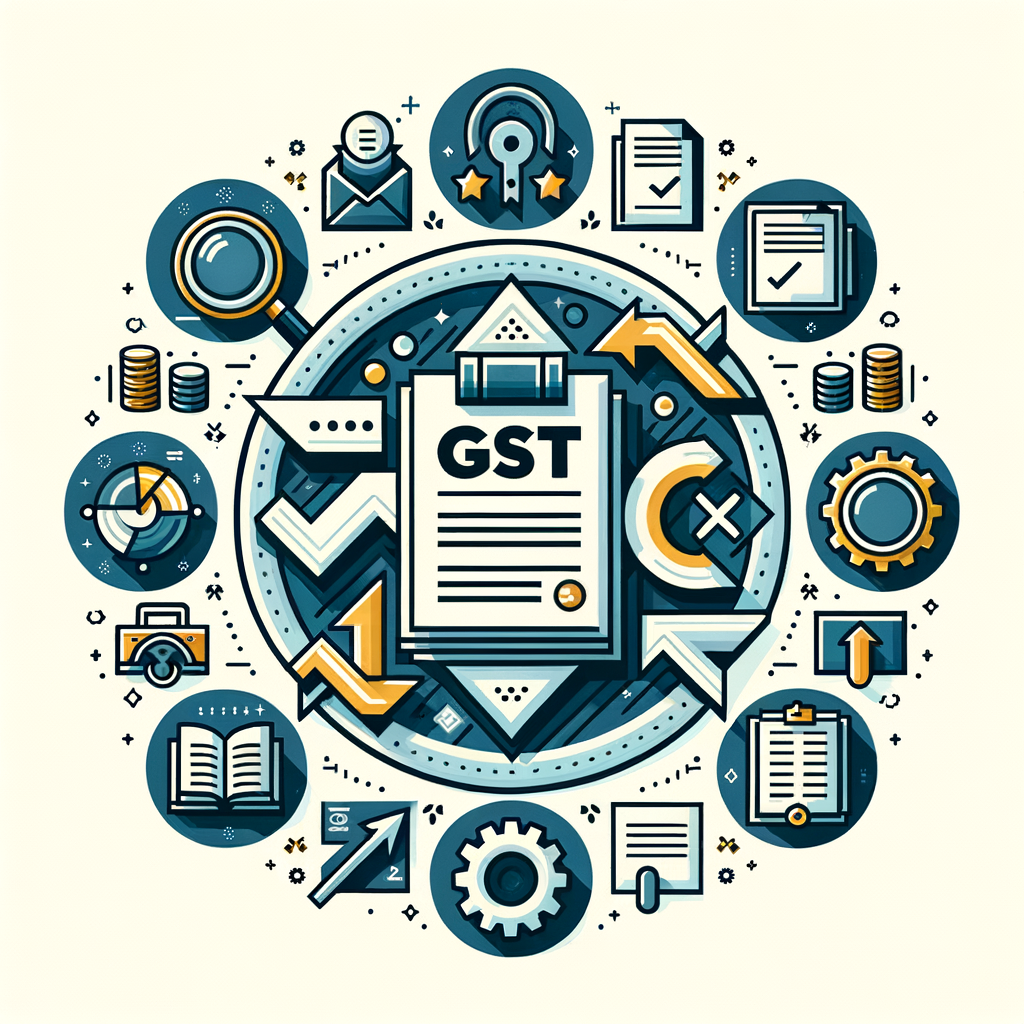How to Master Changing GST Regulations and Compliance in India | TaxRobo
As a business owner in India, you’re likely familiar with the constant stream of notifications, circulars, and press releases from the GST Council. Keeping track of these updates can feel like a full-time job. The Goods and Services Tax (GST) regime is designed to be dynamic, but this constant evolution presents a significant challenge. Mastering changing GST regulations compliance isn’t just a legal formality; it’s a critical component of your business’s financial health and operational stability. Failure to adapt to the latest rules can lead to heavy penalties, disrupt your cash flow, and damage your business’s reputation. This article provides a clear, actionable framework to help you stay ahead of the curve, ensure seamless GST compliance for businesses India, and protect your enterprise from unnecessary risks.
The High Cost of Ignoring GST Compliance Standards in India
Many businesses view GST compliance as a burdensome administrative task. However, neglecting it is one of the most expensive mistakes you can make. Adhering to the latest compliance standards in India is not merely about ticking boxes; it’s a fundamental pillar of business continuity and financial prudence. The consequences of non-compliance extend far beyond a simple notice from the tax department, creating a ripple effect that can impact your operations, profitability, and long-term viability. Understanding these potential pitfalls creates a powerful incentive to prioritize and streamline your compliance processes.
Understanding Penalties, Late Fees, and Interest
The most immediate and tangible consequence of non-compliance is the financial outgo. The GST law has specific provisions for penalties that can quickly accumulate and strain your resources. For instance, late filing of GSTR-1 (statement of outward supplies) and GSTR-3B (summary return) attracts a late fee for every day of delay, subject to a maximum cap. More significantly, any delay in paying the due GST liability incurs interest at a rate of 18% per annum, calculated from the due date until the actual date of payment. For persistent defaulters, the consequences are even more severe. The GST authorities have the power to cancel your GST registration if returns are not filed for a continuous period, effectively halting your ability to conduct business legally.
Impact on Input Tax Credit (ITC) and Cash Flow
Perhaps the most damaging impact of poor compliance is on your working capital, specifically through the mechanism of Input Tax Credit (ITC). ITC is the backbone of the GST system, allowing you to deduct the tax you’ve already paid on inputs from the tax you owe on your final output. However, to claim ITC, a strict set of conditions must be met, including the requirement that your supplier has filed their GSTR-1 and paid the tax to the government. If your vendor is non-compliant, your ITC could be blocked, forcing you to pay the full tax amount from your pocket and severely impacting your cash flow. Furthermore, a poor compliance rating can damage your credibility with customers and suppliers, as they may be hesitant to do business with an entity that could jeopardize their own ITC claims. This makes knowing how to comply with GST India a matter of both financial and reputational importance.
Key Areas to Monitor for GST Regulatory Changes for Indian Businesses
The GST landscape is vast, but you don’t need to be an expert on every single clause to stay compliant. By focusing your attention on a few key areas that are frequently updated, you can effectively manage the most critical aspects of your compliance obligations. The government often introduces changes in these areas to plug loopholes, simplify processes for taxpayers, or increase transparency. Keeping a close watch on these specific domains will ensure you are always aware of the most significant GST regulatory changes for Indian businesses and can adapt your processes accordingly.
GST Return Filing (GSTR-1 & GSTR-3B)
The monthly or quarterly filing of GSTR-1 and GSTR-3B is the cornerstone of GST compliance. GSTR-1 is where you declare all your sales (outward supplies), while GSTR-3B is a summary return where you declare your total sales, ITC claimed, and the net tax payable. A recent major GST regulations update India was the introduction of the QRMP (Quarterly Return Monthly Payment) scheme. This allows small taxpayers with an aggregate annual turnover of up to ₹5 crores to file their GSTR-1 and GSTR-3B on a quarterly basis, while still paying their tax liability monthly. Understanding such schemes and their eligibility criteria is vital for easing your compliance burden. For a detailed walkthrough, our guide on How to File GST Returns Online: A Step-by-Step Guide of the GST Filing Process & Procedure can be very helpful.
E-Invoicing and Invoice Reporting
E-invoicing is a system where B2B invoices are electronically authenticated by the GST Network (GSTN) for further use on the common GST portal. This has been one of the most significant GST compliance standards for enterprises introduced in recent years. The government implemented e-invoicing in a phased manner, initially for large corporations and progressively lowering the turnover threshold to include smaller businesses. It is crucial to monitor these thresholds. Generating a valid e-invoice with an Invoice Reference Number (IRN) is mandatory for applicable businesses, and failure to do so means the invoice is not legally valid. This directly impacts your customer, as they will be unable to claim ITC on that invoice, potentially leading to business disputes. To prevent this, it’s essential to master the process, as outlined in our guide to Understanding GST Invoicing: A Detailed Guide.
Input Tax Credit (ITC) Rules and Reconciliation
The rules governing ITC are stringent and often subject to clarification and amendment. The fundamental conditions for claiming ITC include:
- You must be in possession of a valid tax invoice or debit note.
- You must have received the goods or services.
- The tax charged on your purchases has been paid to the government by your supplier.
- Your supplier has filed their GSTR-1.
A critical compliance activity is the reconciliation of your purchase records with the auto-populated GSTR-2B statement. GSTR-2B provides a static statement of the ITC available to you for a particular month. Any discrepancy between your books and GSTR-2B must be investigated and resolved with your supplier to avoid incorrect ITC claims and subsequent notices from the tax department. Implementing robust ITC Reconciliation: Importance and Best Practices for Businesses is key to avoiding these issues.
GST Rates and HSN Code Changes
The GST Council meets periodically to review the tax structure, which can lead to changes in GST rates for various goods and services. A product that was taxed at 18% might be moved to the 12% or 28% slab. Businesses must stay updated on these rate changes to ensure they are charging the correct amount of tax on their invoices. Similarly, the Harmonized System of Nomenclature (HSN) code, used to classify goods for taxation purposes, must be correctly mentioned on invoices. The government occasionally updates HSN requirements or clarifies the classification for certain goods, and using an incorrect code can lead to tax disputes and penalties.
A Practical Guide: How to Comply with GST India Proactively
Navigating the complexities of GST doesn’t have to be a reactive, stressful process. By adopting a proactive approach and building a robust compliance framework, you can transform this challenge into a manageable routine. Shifting from “what” and “why” to “how” is the key to empowerment. The following steps provide a practical roadmap for any business owner looking to master changing GST regulations compliance and build a resilient system.
Step 1: Bookmark Official Government Sources
The most reliable and accurate source of information is always the government itself. Make it a habit to regularly visit the official portals.
- The Official GST Portal: https://www.gst.gov.in
- The Central Board of Indirect Taxes and Customs (CBIC): https://www.cbic.gov.in
On these websites, look for the “Notifications,” “Circulars,” and “Press Releases” sections. These documents are the official legal instruments for any GST regulations update India. Set a reminder to check these portals at least once or twice a month, especially around return filing due dates.
Step 2: Leverage Technology and Automation
In the digital age, manual compliance is inefficient and prone to errors. Investing in modern accounting or dedicated GST compliance software is one of the smartest decisions you can make. These tools can:
- Automate Return Preparation: Automatically populate your GSTR-1 and GSTR-3B based on your sales and purchase data, minimizing data entry errors.
- Simplify ITC Reconciliation: Fetch data from GSTR-2B and automatically match it against your purchase register, highlighting discrepancies in minutes.
- Integrate E-Invoicing: Generate IRNs and e-way bills directly from your invoicing software, ensuring seamless compliance.
Using technology is a powerful way to manage the complexities of changing regulations compliance India and free up your time to focus on your core business activities.
Step 3: Subscribe to Authoritative Financial Publications
While government portals provide the raw legal text, financial news outlets and expert blogs often break down these updates into easy-to-understand language. Follow reputable business newspapers and online publications that have dedicated sections on taxation. Subscribing to newsletters from trusted sources, like the TaxRobo blog, can provide you with timely analysis and expert commentary on what recent GST changes mean for your specific business.
Step 4: Partner with a GST Expert
While the above steps can empower you to manage day-to-day compliance, some situations require professional expertise. For complex transactions, industry-specific rules, or responding to a notice from the tax department, the guidance of a chartered accountant or a tax consulting firm is invaluable. A professional partner like TaxRobo can offer personalized advice, handle your filings, and provide proactive alerts. This ensures you never miss a critical update on changing GST regulations compliance and can navigate any challenges with confidence.
Conclusion
Staying compliant with India’s evolving GST laws is a continuous journey, not a one-time destination. It requires a commitment to staying informed and a willingness to adapt. However, it is far from an impossible task. By building a proactive strategy that involves regularly monitoring official sources, leveraging the power of technology, and seeking professional help when needed, you can demystify the process. Managing changing GST regulations compliance effectively protects your business from financial penalties, optimizes your cash flow by ensuring timely ITC, and solidifies your reputation as a reliable business partner. With the right approach, compliance becomes less of a burden and more of a strategic advantage.
Feeling overwhelmed by GST compliance? Don’t risk penalties. Schedule a consultation with TaxRobo’s GST experts today and let us handle the complexities while you focus on growing your business.
Frequently Asked Questions (FAQs)
Q1: What is the most common mistake small businesses make regarding GST compliance in India?
A: A very common and costly mistake is the improper claim of Input Tax Credit (ITC) due to a lack of diligent reconciliation. Many businesses fail to systematically match their purchase invoices with the data reflected in their GSTR-2B. This discrepancy often leads to claiming excess or ineligible ITC, which is eventually flagged by the tax authorities, resulting in notices, demands for reversal of ITC along with interest, and penalties.
Q2: How often do I need to check for a GST regulations update India?
A: A good rule of thumb is to check the official GST and CBIC portals at least once a month, typically around the time you are preparing your monthly returns. Major policy changes or rate revisions are usually announced immediately after a GST Council meeting. It’s highly advisable to keep track of the dates of these meetings and look for updates in the days that follow.
Q3: I am a salaried person with a small side business. Do I need to worry about GST?
A: Yes, absolutely. Your salaried income is separate from your business income. If your aggregate annual turnover from your side business (which includes the total value of all taxable, exempt, and export supplies) exceeds the prescribed GST registration threshold, you are legally required to register for GST and comply with all its provisions. The current threshold in most states is ₹40 lakhs for businesses exclusively supplying goods and ₹20 lakhs for those supplying services or both goods and services.
Q4: Can using software guarantee 100% changing regulations compliance India?
A: While GST software is an incredibly powerful tool that significantly reduces the chances of manual errors, automates repetitive tasks, and simplifies reconciliation, it cannot guarantee 100% compliance on its own. Software is a tool that operates on the data you provide. Ensuring the accuracy of the data entered (e.g., correct HSN codes, customer GSTINs) and understanding the strategic implications of major legal changes still requires human oversight. The ideal approach is to combine robust software with periodic reviews and guidance from a tax professional.



